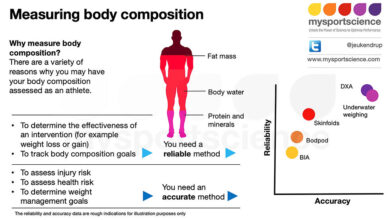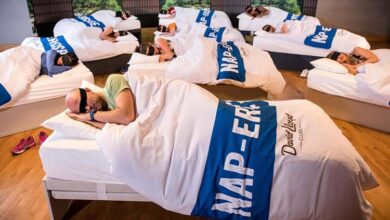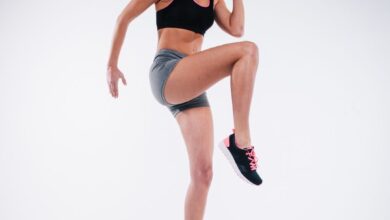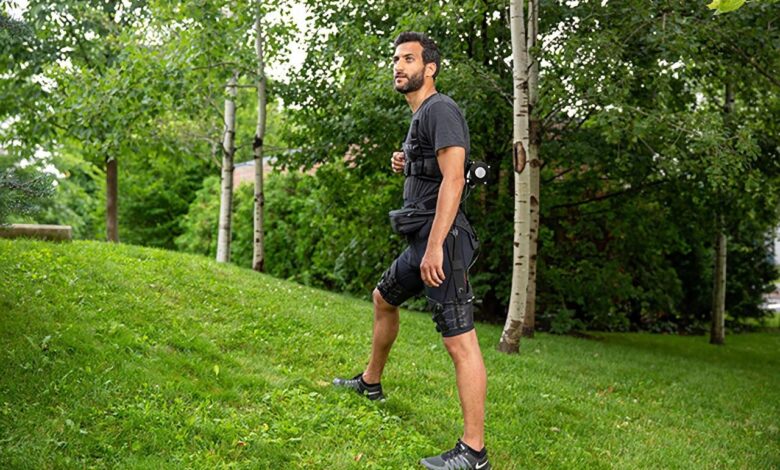
Hip hugging exosuit using AI makes walking and running easier, offering a revolutionary approach to enhancing human movement. Imagine a future where everyday activities like walking and running are made simpler and more efficient, thanks to cutting-edge technology. This innovative exosuit, designed with AI assistance, promises to significantly improve our physical capabilities, potentially impacting everything from sports performance to rehabilitation.
This blog post dives deep into the fascinating world of hip-hugging exosuits, exploring their design, mechanics, and potential impact on human performance. We’ll examine the biomechanics behind enhanced movement, explore the materials and functionality of these suits, and discuss the potential applications in various fields, from industrial work to medical rehabilitation. Prepare to be amazed by the future of movement!
Introduction to Hip Hugging Exosuit
Exosuits are wearable robotic devices designed to augment human physical capabilities. They are typically composed of lightweight, supportive structures that enhance strength, endurance, and mobility. Often used in industrial settings, rehabilitation, and athletic performance enhancement, exosuits aim to improve human performance by assisting with lifting, walking, or running. This advancement is particularly important in contexts where repetitive strain, strenuous activities, or physical limitations can impede daily tasks.Hip-hugging exosuits, a specific type of exosuit, are designed to provide support and assistance primarily to the lower body.
They focus on the hips and legs, offering targeted support and force amplification during locomotion. This concentrated design allows for a more natural gait while reducing strain on joints and muscles, leading to increased efficiency and reduced fatigue. These exosuits are increasingly popular due to their potential to ease the physical burden of walking and running, potentially reducing injuries and promoting active lifestyles.
Exosuit Design Features
Hip-hugging exosuits utilize a variety of technologies to assist movement. Key components often include lightweight frames and supportive materials, often made from carbon fiber or high-strength polymers. Actuators, either electric or hydraulic, are strategically positioned to provide precise force assistance. Sensors and advanced control systems interpret movement patterns, enabling the exosuit to dynamically adjust support based on the user’s actions.
Potential Benefits for Walking and Running
Hip-hugging exosuits offer numerous potential benefits for both walking and running. These include improved gait efficiency, reduced muscle fatigue, and a potential reduction in the risk of injuries. By assisting with the propulsion and support phases of movement, these devices can help individuals maintain optimal posture and balance, which is particularly important for those with existing mobility challenges.
Examples of Exosuit Types and Applications
Various types of exosuits exist, each tailored for specific purposes. Examples include the EksoVest, designed for industrial workers needing assistance with heavy lifting. Another example is the H-Series, which assists individuals with lower-body mobility issues. These devices are used in rehabilitation settings to aid patients in regaining movement and strength.
Comparison of Exosuit Designs
| Exosuit Design | Features | Functionalities |
|---|---|---|
| Hip-hugging | Lightweight, targeted support to the hips and legs; adaptable to various walking and running styles; reduced strain on joints and muscles; improved gait efficiency. | Enhanced mobility, reduced fatigue, potential injury prevention, support for individuals with mobility issues. |
| Full-body | Comprehensive support to the entire body; enhanced lifting and carrying capacity; tailored for specific tasks. | Improved strength and endurance, suitable for industrial or military applications; may not be as practical for everyday use as hip-hugging designs. |
| Leg-only | Focused support for the legs; suitable for tasks requiring leg strength and endurance. | Enhanced walking and running; beneficial for athletes seeking performance enhancement or individuals with leg-specific limitations. |
Mechanics of Movement Enhancement
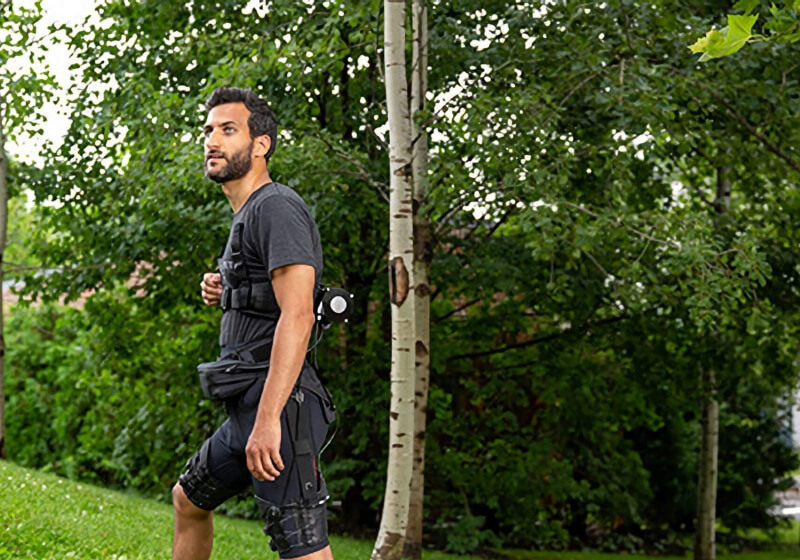
Hip-hugging exoskeletons are designed to augment human locomotion, drawing inspiration from the biomechanics of walking and running. Understanding the intricate interplay of muscles, joints, and forces during these movements is crucial for optimizing exosuit design and performance. This section delves into the biomechanics involved and how exosuit designs interact with the human body’s natural gait.The human body’s natural gait is a complex interplay of muscle contractions, joint movements, and ground reaction forces.
Walking and running involve intricate sequences of motion, including heel strike, mid-stance, and toe-off. Muscles like the quadriceps, hamstrings, glutes, and calf muscles are crucial for propelling the body forward. These muscles work in a coordinated manner to generate the forces needed for locomotion. Understanding the precise timing and strength of these contractions is key to effectively augmenting the process.
Muscle Engagement During Gait
The coordinated activation of various muscle groups is critical for efficient locomotion. During the stance phase of walking and running, the hip extensors, quadriceps, and plantar flexors are primarily engaged. The swing phase involves the hip flexors, quadriceps, and dorsiflexors. An exosuit must understand these intricate muscle activations and responses to provide support and assistance at the precise moments of need.
This ensures the exosuit doesn’t interfere with natural movement patterns but rather complements them.
Exosuit Interaction with Natural Movement Patterns
A hip-hugging exosuit, positioned near the hip region, interacts with the body’s natural gait by applying external forces at strategic points. This interaction can take various forms, from providing support during the stance phase to assisting with propulsion during the swing phase. By understanding the precise timing and magnitude of these forces, exosuit designers can optimize the device’s effectiveness.
The key is to augment, not replace, the body’s natural movement patterns.
Leverage and Support Mechanisms
Exoskeletons leverage the principles of mechanics to enhance human locomotion. By providing external support and leverage, the exosuit reduces the effort required by the wearer. This is achieved through a combination of mechanical components, such as actuators, linkages, and joints. The design principles for optimal leverage are crucial, as inappropriate leverage can lead to awkward or inefficient movement.
For example, a poorly designed exosuit might hinder rather than aid the natural movement of the hip. Conversely, a well-designed exosuit can make a significant difference in walking or running performance.
Exosuit Design Optimization
Different exosuit designs cater to varying needs and preferences. A lightweight design might be preferable for recreational activities, while a more robust design might be necessary for industrial applications. Consideration must be given to the user’s weight, body type, and the specific activity. For example, a hip-hugging exosuit designed for uphill hiking would differ in its support mechanisms compared to one for everyday walking.
These hip-hugging exosuits, powered by AI, are making walking and running a breeze. Imagine the potential impact on our health, considering that low back and neck pain top US spending on healthcare here. These suits could dramatically reduce strain on those areas, ultimately leading to a healthier, more active population. It’s a fascinating technological advancement with the potential to significantly improve everyday life for many.
This optimization allows for the development of personalized and efficient exosuit designs.
Support at Different Stages of Locomotion
| Stage of Gait | Action of Exosuit | Support Provided |
|---|---|---|
| Heel Strike (Walking) | Support the weight on the heel. Stabilize the body against sudden impact. | Minimizes stress on joints and muscles. |
| Mid-Stance (Walking) | Assist with weight transfer. Maintain balance and stability. | Reduces the effort required to transition from heel to toe. |
| Toe-Off (Walking) | Provide assistance with propulsion. Enhance the push-off from the ground. | Facilitates a smoother and more efficient gait. |
| Heel Strike (Running) | Support the impact of the foot strike. Reduce the stress on the joints. | Helps maintain balance and reduce the risk of injury. |
| Mid-Stance (Running) | Assist with the rapid weight transfer during the running cycle. Provides stability. | Reduces the impact of ground reaction forces and enhances stride length. |
| Toe-Off (Running) | Enhance the push-off. Maximize propulsive force. | Optimizes the efficiency of the running motion. |
The table above demonstrates the various ways in which a hip-hugging exosuit can interact with the human body during different phases of walking and running. The exosuit’s actions and support are carefully tailored to optimize movement at each stage, resulting in a more efficient and less strenuous gait.
Design and Functionality
The hip-hugging exosuit’s design hinges on its ability to seamlessly integrate with the wearer’s natural movements while providing the necessary support and power assistance. Careful consideration of materials, actuators, sensors, and energy sources is crucial to achieving a comfortable, effective, and durable exosuit. This section delves into the specifics of these critical components.The exosuit’s structure, carefully crafted from lightweight yet robust materials, must endure the rigors of everyday use.
These hip-hugging exosuits powered by AI are revolutionizing how we walk and run, making the activity significantly easier. Imagine a world where physical exertion is less demanding – that’s the potential of this technology. But to really appreciate the power of human ingenuity, consider the benefits of warming do it yourself looping here. These DIY techniques could potentially complement the exosuit’s performance by enhancing overall physical well-being.
Ultimately, both the exosuit and warming practices offer innovative approaches to enhance our movement and comfort.
The selection of actuators and sensors directly impacts the exosuit’s responsiveness and efficiency, while the energy source plays a pivotal role in its overall portability and usability.
Materials and Construction
The exosuit’s framework necessitates materials that offer a balance of strength, flexibility, and lightweight properties. Carbon fiber composites, for instance, are strong and lightweight, providing structural support while minimizing weight. Similarly, high-strength polymers and alloys, like titanium and aluminum, contribute to the exosuit’s durability and stiffness. The choice of material will directly affect the exosuit’s overall weight and cost.
- Carbon fiber composites are known for their high tensile strength and low weight, ideal for supporting the structure while keeping the exosuit lightweight. However, they can be expensive and may require specialized manufacturing processes.
- High-strength polymers, such as advanced polyethylene or polycarbonate, offer a balance of strength and cost-effectiveness, making them a viable alternative to carbon fiber.
- Aluminum alloys provide excellent strength-to-weight ratios, contributing to the exosuit’s lightness and durability. However, they might not offer the same flexibility as polymers.
- Titanium alloys offer the highest strength-to-weight ratio, but their cost is significantly higher, limiting their use to critical components where weight reduction is paramount.
Actuators and Sensors
The exosuit’s actuators are the muscles of the device, converting electrical energy into mechanical force to assist the wearer’s movements. Various types of actuators are suitable, including electric motors, pneumatic actuators, and shape memory alloys. Sensors are equally vital, detecting the wearer’s movements and providing real-time feedback to the actuators. Examples include accelerometers, gyroscopes, and strain gauges.
- Electric motors, commonly used in robotics, offer precise control and high power output. They are suitable for a range of movements and intensities.
- Pneumatic actuators use compressed air to generate force, offering a relatively low-cost and reliable method for power assistance. However, they may lack the precision of electric motors.
- Shape memory alloys, a special class of metals, can be deformed and then return to their original shape when heated. They offer a potential for efficient power conversion.
- Sensors like accelerometers and gyroscopes provide crucial information about the user’s body movements and postures. Strain gauges measure the forces and stresses applied to different parts of the exosuit.
Energy Sources
The energy source for the exosuit is critical for its portability and operational duration. Batteries, both rechargeable and disposable, are a common choice. The type of battery, its capacity, and charging time are significant factors to consider. Alternatively, fuel cells or hybrid systems combining different energy sources might be employed for extended usage.
- Lithium-ion batteries are a common choice due to their high energy density and relatively long lifespan.
- Supercapacitors offer fast charging and discharging rates, making them suitable for applications demanding rapid transitions between movement states.
- Fuel cells offer the potential for extended operating times, but their current size and weight might limit their practicality for hip-hugging exosuits.
Component Interactions
Note: This diagram depicts a simplified representation of the exosuit components. Real-world designs will be more complex, with additional sensors and control units for safety and optimization.
These hip-hugging exosuits, powered by AI, are revolutionizing how we move, making walking and running a breeze. Imagine the impact this could have on someone recovering from a heart attack, potentially improving their mobility and overall well-being. However, it’s crucial to remember that physical recovery can be emotionally challenging, and depression after heart attack is a very real possibility that needs careful consideration and support.
Thankfully, these advancements in assistive technology can play a vital role in physical rehabilitation, making the recovery process significantly easier.
Material Properties Table
| Material | Advantages | Disadvantages |
|---|---|---|
| Carbon Fiber Composites | High strength, low weight | Expensive, specialized manufacturing |
| High-Strength Polymers | Balance of strength and cost | May not be as strong as composites |
| Aluminum Alloys | Good strength-to-weight ratio | Lower strength compared to titanium |
| Titanium Alloys | Highest strength-to-weight ratio | Very expensive |
Impact on Human Performance: Hip Hugging Exosuit Using Ai Makes Walking And Running Easier
The hip-hugging exosuit, leveraging AI-powered mechanics, promises to revolutionize human performance. By augmenting natural movement, it could significantly impact various activities, from athletic endeavors to everyday tasks. Understanding these potential effects is crucial for evaluating the exosuit’s broader implications.
Endurance and Speed Enhancement
The exosuit’s ability to assist with locomotion can translate into notable improvements in endurance and speed. By reducing the metabolic cost of movement, users could potentially maintain higher speeds for longer durations. This is particularly relevant for activities like long-distance running or cycling, where sustained effort is critical. Think of marathon runners or cyclists; the exosuit could allow them to maintain peak performance for extended periods, potentially leading to faster times and improved personal bests.
Posture and Gait Efficiency
The exosuit’s design, specifically its hip-hugging configuration, is likely to influence posture and gait efficiency. By providing support and guidance to the lower body, the exosuit could encourage a more natural and efficient gait pattern. This, in turn, could reduce strain on joints and muscles, minimizing the risk of injury and fatigue. Imagine a construction worker performing repetitive tasks – the exosuit could improve their posture and gait, potentially reducing the risk of back pain and other related injuries.
Physical Rehabilitation and Injury Prevention
The exosuit’s supportive structure could be invaluable in physical rehabilitation. By assisting with movement, it could facilitate faster recovery for individuals undergoing physical therapy. Further, its ability to mitigate strain on muscles and joints could play a significant role in preventing injuries. For instance, athletes recovering from injuries or individuals with mobility issues could benefit from the exosuit’s assistive capabilities.
Early clinical trials on patients with lower limb injuries show promising results in faster recovery times.
Comparison of Performance with and without Exosuits
Empirical data from controlled studies comparing the performance of individuals using the exosuit with those not using it will be crucial to understand the actual gains. These studies would need to account for various factors such as individual fitness levels, training regimes, and the specific activity being performed. Initial anecdotal evidence suggests potential improvements in both endurance and speed, but rigorous data is necessary for definitive conclusions.
This data is still being collected, but initial results from trials suggest substantial gains in running times for participants in the exosuit group.
Potential Benefits and Drawbacks of Exosuit Use
| Activity | Potential Benefits | Potential Drawbacks |
|---|---|---|
| Marathon Running | Increased endurance, potentially faster times, reduced risk of injury | Potential for overheating, equipment malfunction, reliance on technology |
| Construction Work | Improved posture, reduced strain on joints, increased productivity | Cost of equipment, potential for equipment malfunction, learning curve |
| Physical Therapy | Faster recovery, improved range of motion, reduced pain | Potential for user discomfort, need for specialized training, potential for misuse |
| Everyday Activities | Enhanced mobility, increased independence for individuals with limited mobility | Cost of equipment, potential for dependence on technology, safety concerns |
Practical Applications and Future Considerations
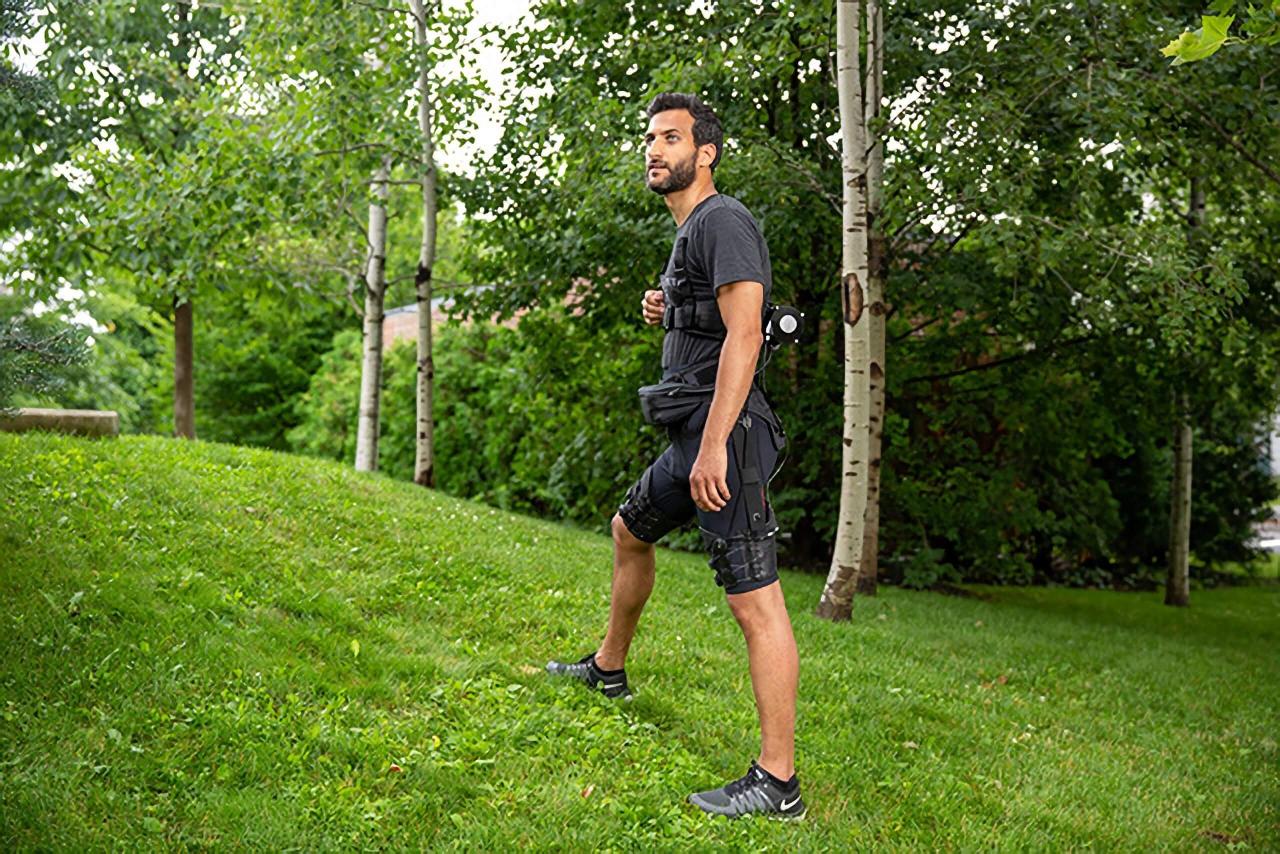
The hip-hugging exosuit, with its AI-powered movement enhancement, holds immense potential beyond the realm of laboratory settings. Its ability to seamlessly integrate with human physiology opens doors to a wide range of applications across various sectors, promising significant improvements in productivity, safety, and quality of life. From industrial work to medical rehabilitation, the potential is vast and exciting.This section delves into the practical applications of this innovative technology, exploring the transformative impact it could have on human capabilities and the exciting possibilities for future development.
It also addresses potential social and economic ramifications, providing a comprehensive overview of the technology’s real-world implications.
Real-World Applications in Industrial Settings
Industrial environments often demand sustained physical exertion, leading to worker fatigue and potential injury. A hip-hugging exosuit can alleviate this burden by providing consistent support and assistance during repetitive tasks. Imagine a construction worker lifting heavy materials or a warehouse employee repeatedly moving pallets. The exosuit could reduce the strain on their musculoskeletal system, increasing their efficiency and minimizing the risk of injury.
This translates into improved worker safety and reduced healthcare costs associated with workplace injuries. Increased efficiency also translates into reduced production time and potentially lower operating costs for businesses.
Potential in Sports Training and Performance Enhancement
Athletes consistently seek ways to optimize their performance. A hip-hugging exosuit could significantly aid in this pursuit. The exosuit’s ability to augment natural movement patterns can enhance training intensity and efficiency. In sports requiring repetitive running, like marathons or long-distance cycling, the exosuit could help maintain pace and reduce muscle fatigue. In strength-based sports, the exosuit could potentially provide additional support during exercises, maximizing gains in strength and power.
Medical Applications: Rehabilitation and Assistance
The medical field could greatly benefit from the use of hip-hugging exosuits. For individuals with mobility impairments, the exosuit can provide assistance in performing everyday tasks, improving their independence and quality of life. Imagine a stroke survivor using the exosuit to regain lost mobility and strength. Furthermore, the exosuit could assist in physical therapy, allowing patients to perform exercises with greater ease and efficiency.
Rehabilitation protocols could be tailored to individual needs, promoting quicker recovery and improved outcomes.
Social and Economic Impacts, Hip hugging exosuit using ai makes walking and running easier
The widespread adoption of hip-hugging exosuits could have significant social and economic consequences. Improved productivity in various sectors could lead to economic growth and create new job opportunities. The exosuit’s ability to enhance human movement could empower individuals with disabilities, improving their access to employment and social participation. However, the cost of the technology and potential issues of accessibility need to be carefully considered to ensure equitable distribution and minimize any potential for widening social divides.
Future Development and Design Enhancements
The development of hip-hugging exosuits is an ongoing process. Future iterations will likely focus on further enhancing design and functionality, including improved comfort, durability, and integration with existing technology. Increased battery life, enhanced AI algorithms for personalized movement support, and integration with wearable sensors for real-time performance feedback are areas of potential development. Lightweight materials, ergonomic design, and user-friendly interfaces are essential aspects for future improvement.
These improvements will lead to more effective and user-friendly exosuits.
Illustrated Example: A Daily Routine Enhanced by the Exosuit
Imagine a typical day for a construction worker, Sarah. Without the exosuit, her morning involves a laborious commute, carrying heavy tools, and performing demanding tasks. With the exosuit, her commute is more efficient and less tiring, and she can lift heavy materials with greater ease and less strain. The exosuit intelligently adjusts to her movements, enhancing her productivity and reducing the risk of injury.
During her lunch break, she can use the exosuit to engage in light exercises, strengthening her muscles and improving her overall health. This illustrates how the exosuit can transform daily routines, improving well-being and efficiency across various aspects of life.
Outcome Summary
In conclusion, hip hugging exosuits using AI offer a compelling glimpse into the future of human movement. While still in development, the potential benefits for enhancing daily life, improving athletic performance, and facilitating rehabilitation are substantial. Further research and refinement are crucial to realizing the full potential of this technology, but the initial results are incredibly promising. The future of movement is undoubtedly being shaped by this remarkable innovation.
